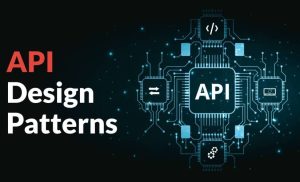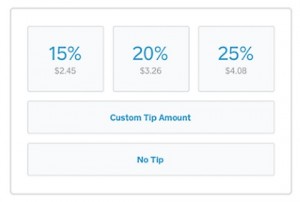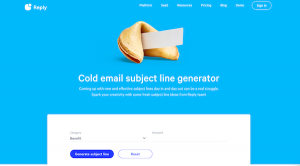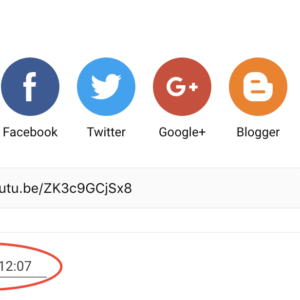Facebook advertising: We now know it bolsters the reach of your organic posts, and using the planet’s most ubiquitous social media platform to drive leads or sales also has its perks.
Engaging ad formats. An unrivaled suite of targeting options. Enough campaign types to help you achieve virtually any marketing objective.
They all add up to one thing: massive advertising opportunity for businesses of all sizes.

This is not a hot take: it’s consensus. Facebook’s 1.8 billion users spend about an hour per day bouncing between Facebook, Messenger, and Instagram. Whether you sell shoelaces or legal services, there are people using the platform who might someday become your customers. IF they know you exist.
Luckily, Facebook makes it relatively simple to a) identify your ideal audiences and b) incite conversions through aesthetically pleasing ads.
With that said, here are the top 10 Facebook advertising features you need to be using if you want to reach your future customers today.
#1: Carousel Ads
Visual content and storytelling are the flavors of the month, and Facebook has found a way to combine both two elements with Carousel Ads. Think of them as the twisty soft-serve of digital marketing.
You can use Carousel Ads to explain the features of a product you sell (or an entire collection), showcase your brand’s USP, or highlight a promotion you’re running.
Using this Facebook ad type, you can leverage:
- Up to 10 images or videos
- Headlines (for each image/video)
- Links
- A Call to Action

Check out this example from Target. The retail giant encouraged people to scroll through its Carousel Ads to preview a new colorful range of products: all of which can be purchased online or at your local Target. I especially dig the way the model appears to walk between the frames of the video; Facebook describes this as “immersive panoramic.” I’d simply call it a kick-ass way to stand out from the competition.
Show off your creativity, highlight what makes your brad unique, and boost engagement metrics: what’s not to love?
#2: The Facebook Pixel
There are a handful of certainties in life. Death. Taxes. The Patriots winning the Super Bowl. Oh, and if you’re not using the Facebook pixel, you’re wasting your time.
Folks, you need to use the Facebook pixel. It’s how you measure conversions, optimize your ads and targeting, and gain insights about the Facebook users who visit your website.
![]()
Without it, you can’t make use of Facebook’s insane remarketing and lookalike audience features. You may as well be lighting wads of cash on fire.
To use implement the Facebook pixel, simply go to Ads Manager, create a pixel, name it, create it, copy the code onto your web pages to start tracking actions, and you’re done.
Now, you can track the actions people take, such as viewing your content, adding items to their shopping cart, or making a purchase, and use those insights to move prospects down the funnel and discover (then advertise to) users who share traits with your existing customers.
For more about the Facebook pixel, you can read the illustrious Brett McHale’s awesome post here on the WordStream blog, The Ultimate Guide to Tracking, Targeting, and Driving Conversions on Facebook.
#3: Website Conversion Campaigns
Once you’ve implemented your Facebook pixel, it’s time to start running Website Conversion campaigns.
The objective of a Website Conversion campaign is self-evident: get people to take a specific on-site (or in-app) action after viewing your ad.

“Action” can be defined as, well, almost anything. It could mean driving people to your website (or a specific page), someone adding an item to a shopping cart, a visitor completing a purchase, or some custom parameter you’ve established a means by which to measure the value of an action taken on your website.
Important note: to use Website Conversion campaigns, an ad must meet a minimum threshold of 15 to 25 conversions during the conversion window you specify; if you don’t usually see 15-25 conversions in a week, consider optimizing for impressions or reach instead.
#4: Behavior Targeting
You want to target the people who are interested in your stuff. Duh!
Facebook’s behavior targeting is all about reaching people based on past purchase behavior, purchase intent, device usage, travel preferences, and other behavioral characteristics.
WordStream’s Facebook ad targeting options infographic compiled all of the behaviors you can target on Facebook. Here they are:

Facebook has collected oodles of user-behavior data, and any data Facebook can’t track itself is obtained from its third-party data partners.
Use behavioral targeting to ensure that you get in front of the right audience segments at the right time.
#5: Interest Targeting
In the same vein, interest targeting allows you to reach your target audience based on the things they’re interested in (not very subtle, that Zuckerberg fella). This could be activities, hobbies, the pages they have liked, or a host of other things.
WordStream also compiled all of the possible interests you can target on Facebook in that same infographic. Here those are:

Facebook has collected its data on interests from:
- Information users provide in their profile updates
- Content they share
- Keywords related to pages
- Apps someone has used and liked
- Ads they’ve clicked on in the past
Facebook will suggest interests in the ad tool, or you can search or browse for interests by yourself.
Use interest targeting to ensure that you get in front of the people who are likely to be interested in your product or service.
#6: Demographic Targeting
Facebook also offers some impressive demographic targeting options for advertisers. Look for yourself:

Location, age, gender, relationship status, education level, work, life events, political affiliation – they’re all here as you’d expect, but they’re just the tip of the iceberg.
Perhaps the most interesting demographic targeting feature available to you on Facebook is the financial option. Being able to ensure that the people who see your ad can afford the products or services you’re selling is a great way to trim wasted ad spend. (If you’re targeting an affluent marketing, check out my post on luxury marketing strategies.)
#7: Custom Audiences
Remarketing is incredibly valuable. This is not news.
People who see your remarketing ads are, on average, twice as likely to convert and three times more likely to engage. In other words, it’s a no-brainer.

Facebook’s version of remarketing is called Custom Audiences. This gets your ads in front of three groups of people:
- Website visitors: People who have visited your website or specific pages within a certain period of time. (Another reason you need the Facebook pixel!)
- Contact lists: People who have shared their email or phone number with your company (e.g., they’ve signed up for your newsletter or attended one of your webinars). You upload this list to Facebook.
- App users: People who have used your app.
Because these people already know your brand, you’ll want to use Custom Audiences to push your hard offers and to try to force these people to take an action. That could mean signing up for something, downloading an eBook, or booking a consultation.
Want to learn more? Check out our Ridiculously Awesome Guide to Facebook Remarketing.
#8: Engagement Ads on Wall Posts
Who’s more valuable to your business than the people who are the most likely to engage with your post?
That’s what I thought.
Facebook allows you to reach the people who react, comment, or share your stuff with Engagement Ads.

Wanna see those Facebook ad benchmarks?! They’re right here
Now, you must understand that these people are just a small-ish subset of your entire Facebook audience. Usually 10 percent of your followers account for 80 percent of all your engagement.
A lack of customer interaction may look funny to potential customers when they’re checking you out. Really, it’s probably just because only 5 percent of your followers will ever see your organic posts thanks to Facebook’s algorithm.
But by spending no more than $ 25 on engagement ads, you’ll reach your super fans. They’ll react and comment on your posts.
You’ll look amazing. And you just might win over those people who visit your page and discover an awesome, engaging business.
#9: Video Ads
Users watch 100 million of video on Facebook every day. Video isn’t just the future of Facebook – it’s huge right now.
You want to create memorable and inspirational videos so that people remember you when they’re in the market for your products or services. Video ads help bias people toward purchasing from your brand.
Oh, and the best part? Video ads are incredibly cheap. Views can cost you as little as a penny.
Now, if you don’t think your audience will be willing to engage with full length videos, consider leveraging the power of Facebook GIF ads: they’re just as dynamic, but infinitely more digestible.

Check out The Complete Guide to Facebook Video Ads for more on how to create an optimize your movin’ pictures.
#10: Lead Ads
Last but definitely not least, Lead Ads are super cheap and insanely effective (oh, and before I forget, lead ads are now available over on LinkedIn, too). This type of ad is great solution if you want prospects to:
- Sign up for your company’s email newsletter.
- Claim deals or discounts.
- Receive price estimates.
- Request a follow-up phone call.
- Make appointments.

Thanks to Lead Ads, people never leave Facebook to become a lead, eliminating an entire stage (the site visit) from your conversion funnel.
The worst thing you can do is send people to a painfully slow and needlessly complicated mobile landing page, where the odds of conversion are around 2.35 percent. People using smartphones don’t want to type in a bunch of information. They want solutions to their problems NOW.
Use Lead Ads to make it easy for you to acquire potential customers’ valuable contact information. If you’re interested in creating your own, check out our guide to making high-converting Facebook lead ads.
Digital & Social Articles on Business 2 Community(80)






